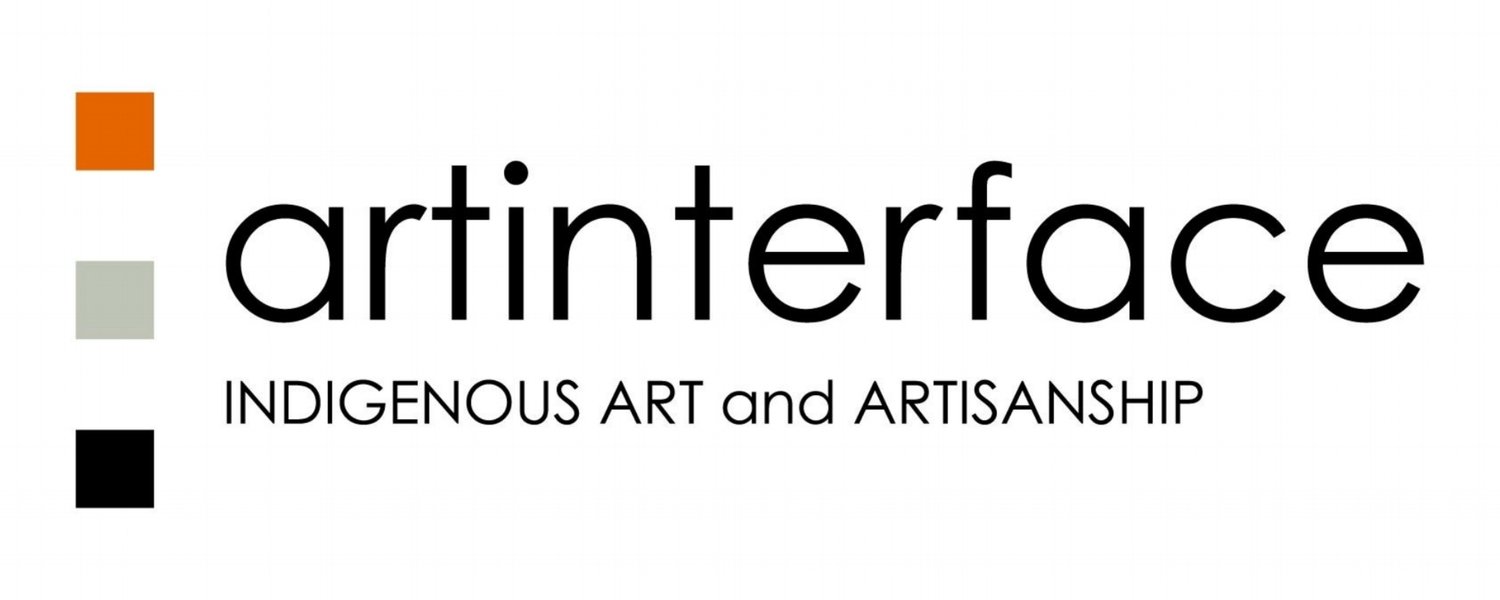Ngapa Jukurrpa (Water Dreaming) - Puyurru - Panel II by Shorty Jangala Robertson
Ngapa Jukurrpa (Water Dreaming) - Puyurru - Panel II by Shorty Jangala Robertson
Shorty Jangala Robertson c.1925 d. 2014
Acrylic on Fredrix quality artist canvas panel
22.9 x 30.5 cm
©Shorty Jangala Robertson/Warlukurlangu Aboriginal Artists Association
Copyright of the artwork and text remains with the artist and Aboriginal traditional owners, is administered on their behalf and reproduced here with permission from Warlukurlangu Artists Aboriginal Corporation.
This delightful little panel is one of a series of 3, the site depicted in this painting is Puyurru, west of Yuendumu. In the usually dry creek beds are water soakages or naturally occurring wells. Two Jangala me, rainmakers, sang the rain, unleashing a giant storm. It travelled across the country, with lightning striking the land. This storm met up with another storm from Wapurtali, to the west, was picked up by a 'kirrkarlan' (brown falcon or Falco berigora) and carried further west until it dropped the storm at Purlungyanu, where it created a giant soakge. At Puyurru the bird dug up a giant snake, 'warnayarra' ('the rainbow serpent') and the snake carried water to create the large lake, Jilllyiumpa, close to an outstation in this country.
This story belongs to Jangala men and Nangala women. In contemporary Warlpiri paintings traditional iconography is used to represent the Jukurrpa, associated dites and other elements. In many paintings of this Jukurrpa curved and straight lines represent the 'ngawarra' (flood waters) running through the landscape. Motifs frequently used to depict this story include small circles representing 'mulju' (water soakages) and short bars depicting 'mangkurdu' (cumulus & stratocumulus clouds)
Shorty Jangala Robertson was born around 1930 at Jila (Chilla Well), a large soakage and claypan north west of Yuendumu, a remote Aboriginal community located 290 kms north-west of Alice Springs in the NT of Australia. He lived a nomadic hunter-gatherer lifestyle with his parents, older brother and extended Warlpiri family. They travelled vast distances across desert country, passing through Warlukurlangu, south west of Jila and Ngarlikurlangu, north of Yuendumu, visitng Jangala’s, his skin brothers. His childhood memories consist of stories associated with the Coniston massacre of Aboriginal people. Families were also shot at Wantaparri, close to Jila. Shorty Jangala Robertson had virtually no contact with white fellas during his youth but remembered leaving Jila for Mt Theo ‘to hide’ from being shot. His father died at Mt Theo. He moved with his mother to Mt Doreen Staton, and subsequently the new settlement of Yuendumu. During World War II, the army took people from Yuendumu to the other Warlpiri settlement at Lajamanu. Shorty was taken and separated from his mother; however, she came to get him on foot and together they travelled hundreds of miles back to Chilla Well. Drought food and medical supplies forced Shorty and his family back to Yuendumu from time to time. His working life was full of adventure and hard work for different enterprises in the Alice Springs and Yuendumu areas. He finally settled at Yuendumu in 1967 after the Australian Citzen Referendum. It is extraordinary in all his travels and jobs over his whole working life, that he escaped the burgeoning and flourishing Central Desert art movement of the 1970’s and 1980’s. Thus Shorty’s paintngs are fresh, vigorous and new. His use of colour to paint and interpret his dreamings of Ngapa (Water), as in this work shown, Watiyawarnu (Acacia), Yankirri (Emu) and Pamapardu (Flying Ant) is vital, yet upholding the Warlpiri tradition. Shorty was well in his 70’s when he started painting. He was an active member of the Warlukurlangu Artists Aboriginal Association, an Aboriginal owned and governed art centre located in Yuendumu. His first solo exhibition at Alcaston Gallery in 2003 was met with great artistic acclaim. Since then he exhibited in Aboriginal Art Exhibitions in Australia and overseas.
He passed away on the 28th of September 2014 on a sunny Sunday morning.
Copyright of all artwork and text remains with the artists and Aboriginal traditional owners and is administered on their behalf by Warlukurlangu Artists Aboriginal Corporation. Shared here with kind permission.
COLLECTIONS
National Gallery of Australia, Canberra
National Gallery of Victoria, Melbourne
Art Gallery of New South Wales, Sydney
Araluen Cultural Precinct, Alice Springs
Artbank, Sydney
Flinders University Art Museum, Melbourne
Gordon Darling Foundation, Canberra



